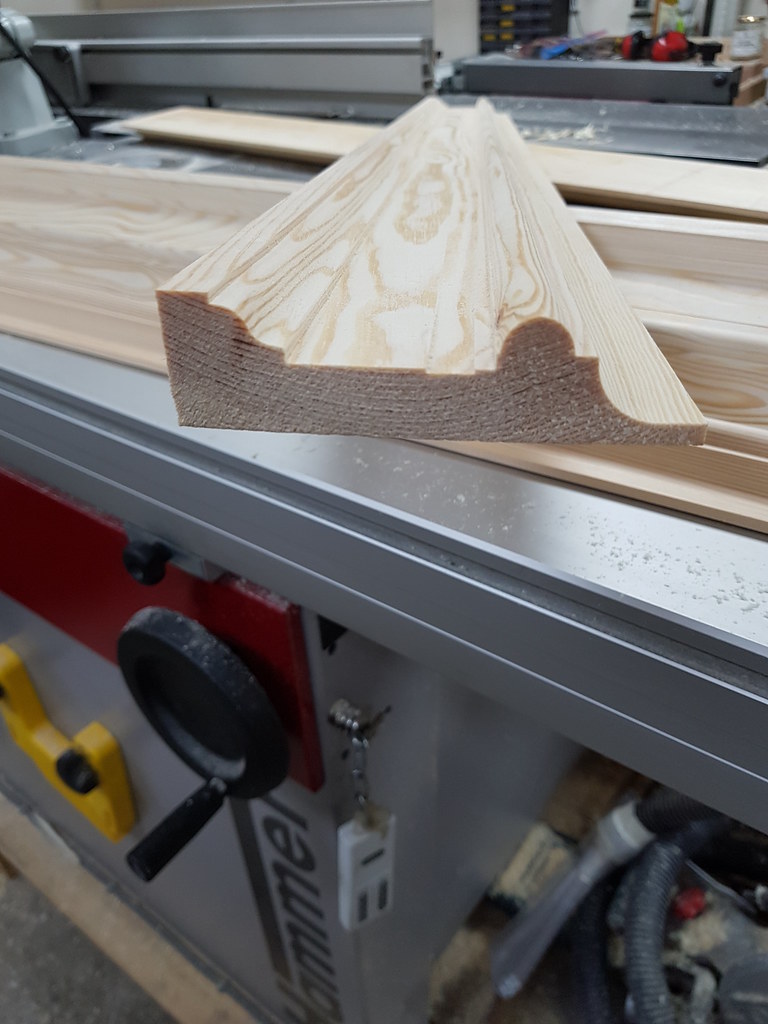RogerS
Established Member
OK and thanks to all those who had go.
The timber is 107mm wide and on my first drawing I had dimensioned the rebate width. This dimension never got through to subsequent drawings especially the one sent to Whitehill. The cutters are 55mm high. Now factor in the fact that the RH cutter doesn’t start at the edge of the timber and you suddenly find that that cutter is actually spanning the whole rebate …plus a couple of mm that eats into the quirk left by the first cutter/pass !
I also got around the difference in profile height - and subsequent support issues after the second pass - by, I think, a very elegant solution. Make the timber wider which means leaving two shoulders at the edges to run against the fence.
You can see that here..as well as the 'damaged' quirk. Ignore the last few cm...

The timber is 107mm wide and on my first drawing I had dimensioned the rebate width. This dimension never got through to subsequent drawings especially the one sent to Whitehill. The cutters are 55mm high. Now factor in the fact that the RH cutter doesn’t start at the edge of the timber and you suddenly find that that cutter is actually spanning the whole rebate …plus a couple of mm that eats into the quirk left by the first cutter/pass !
I also got around the difference in profile height - and subsequent support issues after the second pass - by, I think, a very elegant solution. Make the timber wider which means leaving two shoulders at the edges to run against the fence.
You can see that here..as well as the 'damaged' quirk. Ignore the last few cm...




































